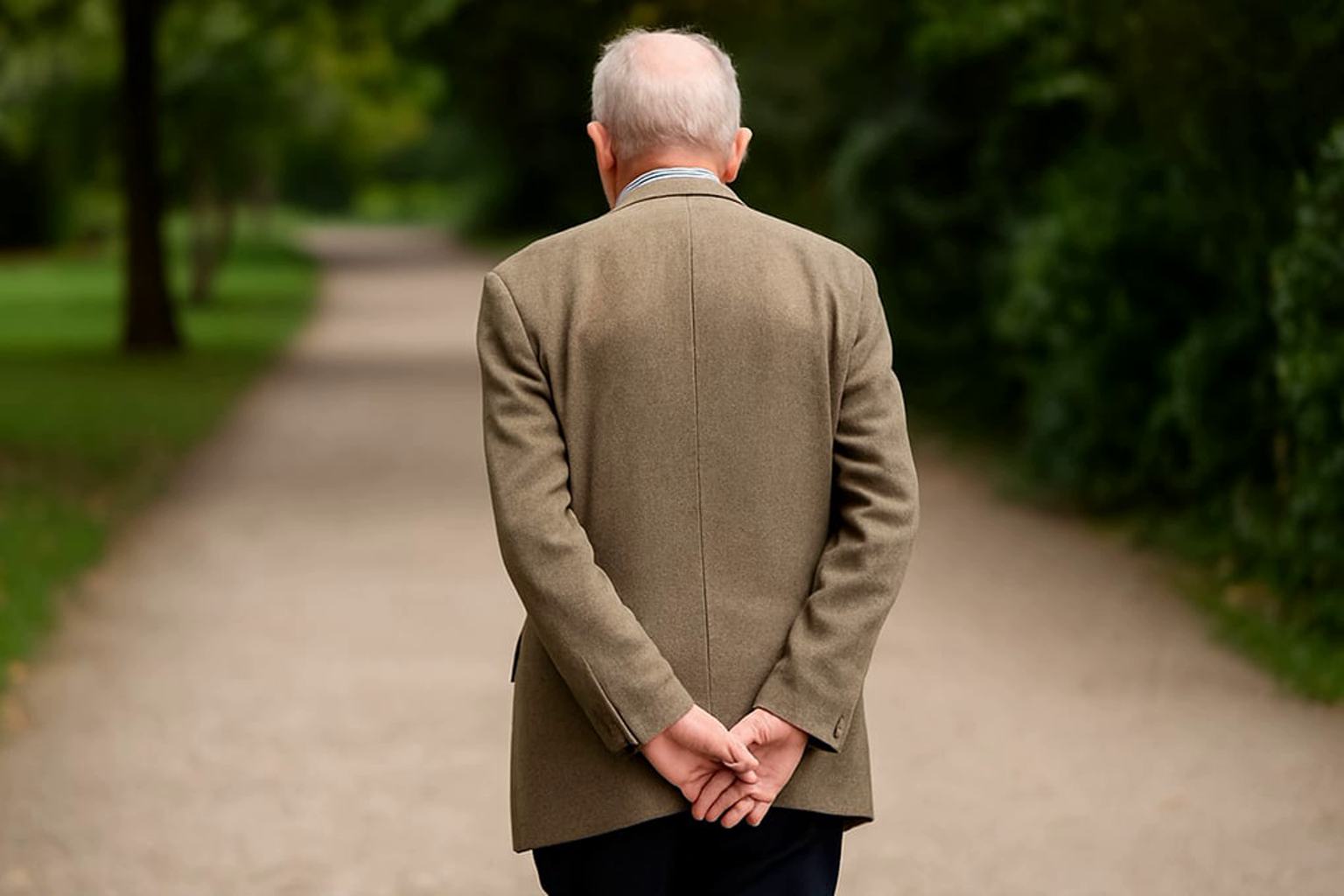Have you ever spotted someone strolling with their hands folded behind their back, as if calmly taking in everything around them? This simple gesture, though easy to overlook, often reveals subtle clues about a person’s character and state of mind. And according to body-language specialists, it can express far more than spoken words…
A stance that radiates ease and confidence
Walking with your hands clasped behind you is, above all, a sign of composure and self-assurance. This position expands the chest, relaxes the shoulders, and creates an effortless sense of confidence. It’s the opposite of a guarded or defensive pose; instead, it reflects genuine inner tranquility.
It’s a posture frequently seen in people who naturally hold positions of authority – teachers, supervisors, military figures, or leaders—who quietly observe their surroundings with steady awareness. Often without realizing it, they project a clear message: they are attentive, grounded, and not easily rattled.
A gesture of reflection and inward focus

Beyond confidence, this posture also encourages thoughtfulness. With the arms resting behind the body, the front of the torso stays open, making breathing easier and helping the mind concentrate. It’s a natural stance for walking while sorting through your thoughts, reflecting on ideas, or simply savoring a peaceful moment.
This is why it’s commonly seen in solitary walkers in parks or people admiring art in a museum: the posture fosters contemplation, curiosity, and quiet reflection.
Between authority, reserve, and physical ease
Depending on where it’s used, the same gesture may carry different meanings. In formal settings – ceremonies, official gatherings, or parades—it signals discipline, decorum, and composure. In other contexts, it may also hint at emotional distance or a degree of personal reserve, as if the person were turning inward.
But there’s no need to overinterpret it: many individuals simply find this posture physically comfortable. It lets the arms rest, releases tension from the shoulders, and makes walking smoother and more balanced. It’s a natural choice, especially when standing for a long time or strolling slowly.
When psychology enters the picture
Behavioral experts view this stance as an indicator of self-control and emotional steadiness. It’s often associated with moments of observation, focus, or analysis—times when the mind is engaged in thinking rather than acting.
Some theories even trace it to ancient instincts: when the environment feels safe, the body stops signaling alertness. Walking with hands behind the back may be a subconscious message that says, “I’m safe, and I’m in control.”

Cultural interpretations differ
In several Asian cultures, this gesture is connected to wisdom and contemplation. It’s commonly seen among teachers, monks, or elders, symbolizing thoughtfulness and inner calm.
In Europe especially within military and academic circles, it conveys discipline and authority. Some schools even teach this posture early on, encouraging children to stand upright as a sign of respect and good manners.
A subtle habit full of meaning
Whether you adopt it for comfort, out of routine, or without realizing it, walking with your hands behind your back is far from insignificant. This gentle, graceful gesture speaks volumes about how you move through the world – steady, curious, observant, or simply at ease.





